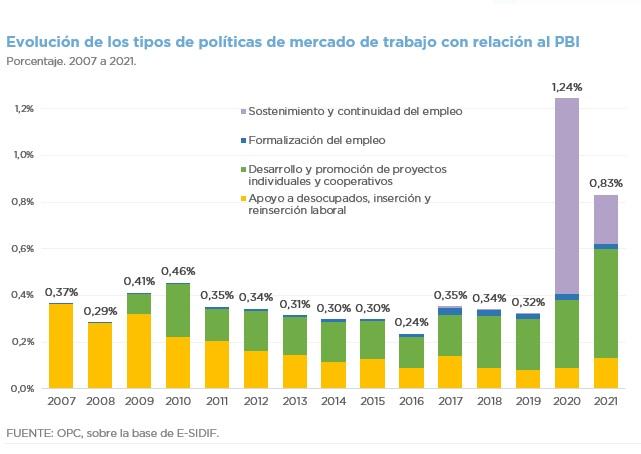- Argentina shows lower activity and employment rate than Latin America and the Caribbean and the OECD, and a higher unemployment rate than both of those regions.
- The employment rate remained relatively stable during the 2007-2021 period, with upward and downward phases in economic activity.
- Since 2012, there has been no increase in the percentage of workers under employment relationship.
- Work activity falls sharply after the age of 40.
- In Argentina, 17.4% of the active population of working age is neither employed nor looking for a job.
- There are higher levels of unemployment, economic inactivity, and informality among women, despite their higher level of education.
- Nearly half of unemployed women and a quarter of unemployed men hold university degrees.
- Households in which one of the heads is informally employed or unemployed have worse indicators of living conditions, although there are formal workers living in poor and even indigent homes.
- The number of people benefiting from employment programs is low, especially considering that the number of unemployed has increased since 2014.
- The government’s labor market policy has changed its profile, replacing strategies to reinsert the unemployed into the formal market with the promotion of their own projects.
- As there is no evidence in practice of a central planning of the Potenciar Trabajo program, guiding the projects to sustainable productive units that imply a real insertion in the formal labor market, it becomes a welfare or support program, instead of an effective labor market policy.
- The levels of unemployment and informal work in the country far exceed the number of beneficiaries of Potenciar Trabajo, so this policy is not enough to change the employment and economic status of people who are in a highly vulnerable situation.

